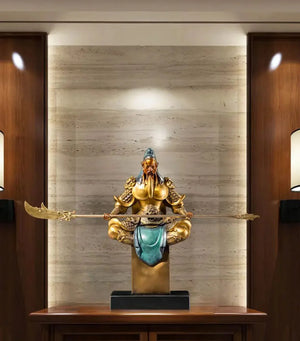
# Chinese Craftsmanship: A Timeless Legacy of Artistry
## The Rich Tapestry of Chinese Crafts
For thousands of years, Chinese craftsmanship has stood as a testament to the nation’s cultural sophistication and artistic ingenuity. From delicate porcelain to intricate silk embroidery, these traditional crafts represent not just objects of beauty but living connections to China’s profound historical legacy.
## The Art of Porcelain: China’s White Gold
The Birth of Porcelain
Chinese porcelain, often called “china” in the West, traces its origins back to the Shang Dynasty (1600-1046 BCE). The development of high-fired ceramics reached its zenith during the Tang (618-907) and Song (960-1279) dynasties, when artisans perfected the techniques that would make Chinese porcelain the envy of the world.
Famous Kilns and Styles
Distinct regional styles emerged across China:
- Jingdezhen – The porcelain capital producing imperial wares
- Dehua – Famous for its “blanc de Chine” white porcelain
- Ru, Guan, Ge, Ding, and Jun – The five great kilns of the Song Dynasty
## Silk: The Fabric of Emperors
Sericulture: An Ancient Secret
For nearly 3,000 years, China guarded the secret of silk production. The intricate process of sericulture – raising silkworms, harvesting cocoons, and unraveling the delicate threads – was developed during the Neolithic period and remained a closely held state secret until the Silk Road facilitated its spread.
Embroidery Techniques
Chinese silk embroidery developed into several distinctive regional styles:
- Su Xiu (Suzhou embroidery) – Known for its fine, delicate stitches
- Xiang Xiu (Hunan embroidery) – Features bold colors and vivid patterns
- Yue Xiu (Guangdong embroidery) – Incorporates gold and silver threads
- Shu Xiu (Sichuan embroidery) – Famous for its “fish-scale” stitching technique
## Lacquerware: Layers of Perfection
The Time-Consuming Process
Chinese lacquerware involves applying multiple layers of sap from the lacquer tree (Toxicodendron vernicifluum), with each layer requiring days to dry. The most exquisite pieces might have hundreds of layers built up over months or years of painstaking work.
Decorative Techniques
Artisans developed numerous decorative methods:
- Carved lacquer (Diaoqi) – Layers are carved into intricate designs
- Inlaid lacquer – Incorporates mother-of-pearl, gold, or silver
- Painted lacquer – Features elaborate painted scenes
## Cloisonné: The Brilliance of Enamel
Keyword: Chinese crafts
A Fusion of Techniques
Cloisonné, known in Chinese as Jingtailan, combines metalworking and enameling techniques that likely came to China via the Silk Road during the Yuan Dynasty (1271-1368). The art form flourished during the Ming (1368-1644) and Qing (1644-1912) dynasties.
The Complex Process
Creating cloisonné involves:
- Forming copper bodies
- Applying delicate copper wire partitions (cloisons)
- Filling compartments with colored enamel pastes
- Multiple firings and polishing
</p